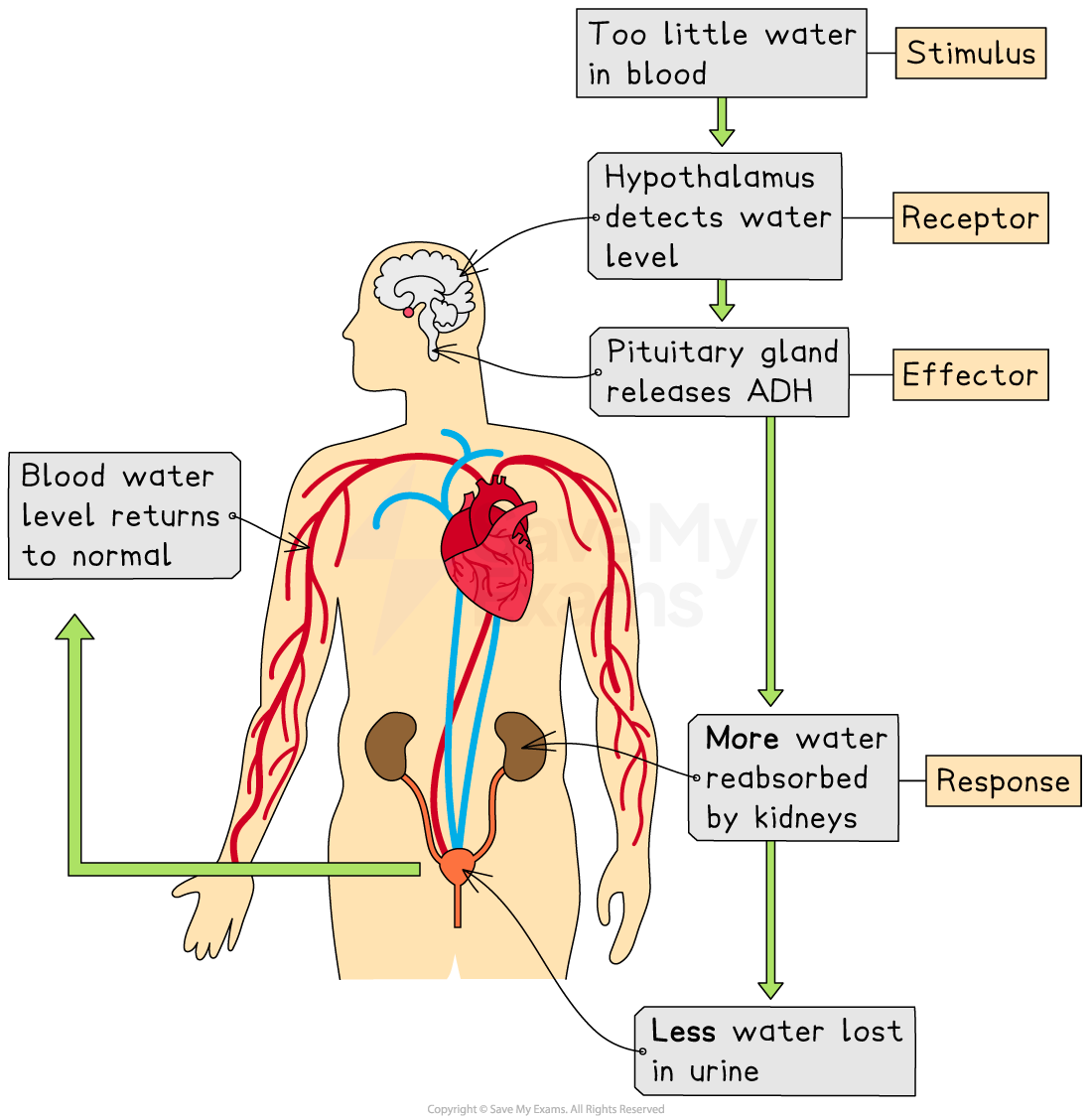Co-ordinating Response (Edexcel IGCSE Science (Double Award)): Revision Note
Exam code: 4SD0
Co-ordinating a Response
Homeostasis (maintaining controlled conditions within the body) is under involuntary (automatic) control
This means that the brain stem (or non-conscious part of the brain) and the spinal cord are involved in maintaining homeostasis – you don’t consciously maintain your body temperature or blood glucose level
These automatic control systems may involve nervous responses or chemical responses (e.g. via hormones)
All control systems that carry out co-ordinated responses require the following:
A stimulus (a change in the environment e.g. a change in glucose levels in the blood, a change in body temperature etc.)
A receptor (receptor cells that detect stimuli)
A coordination centre (such as the brain, spinal cord and pancreas), which receives and processes information from receptors
An effector (a muscle or gland), which brings about responses to restore optimum levels

A co-ordinated response (such as that required when there is not enough water in the blood) requires a stimulus, a receptor and an effector

Unlock more, it's free!
Did this page help you?